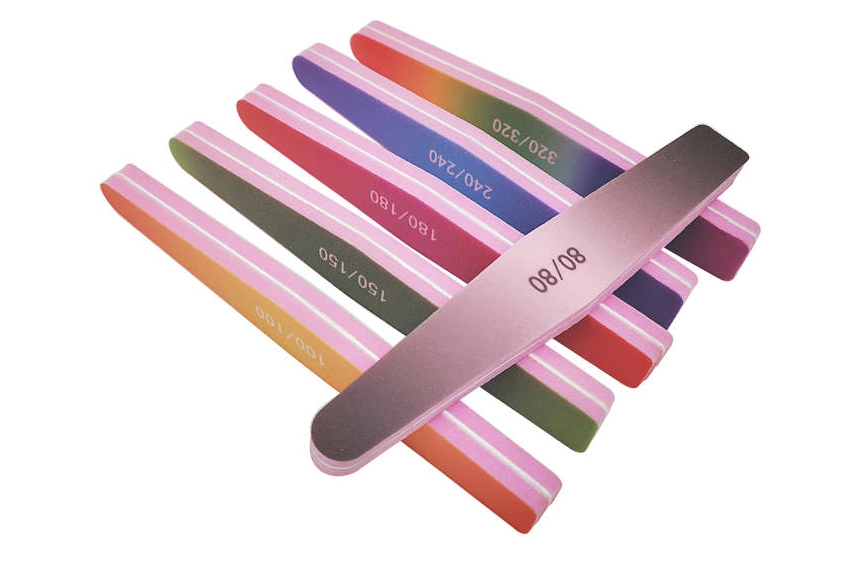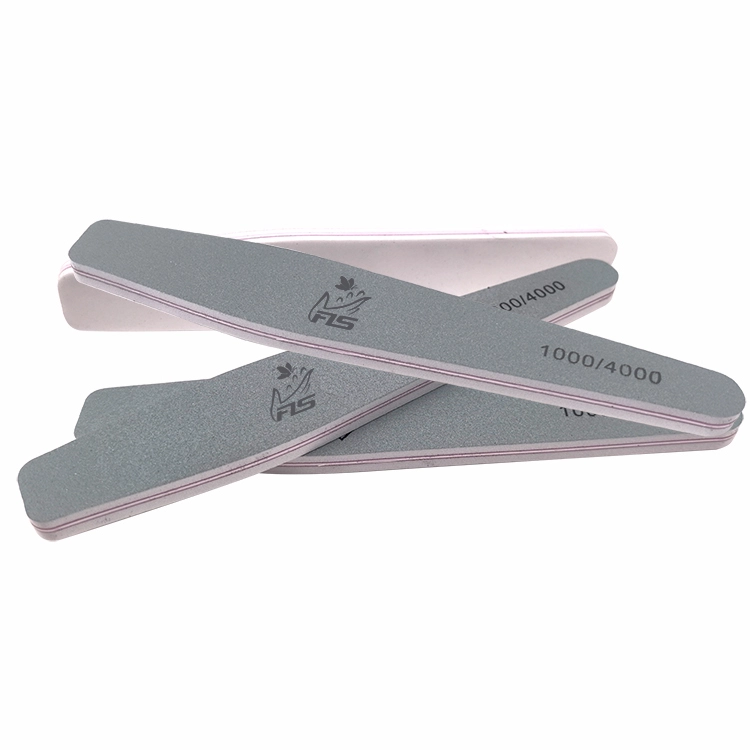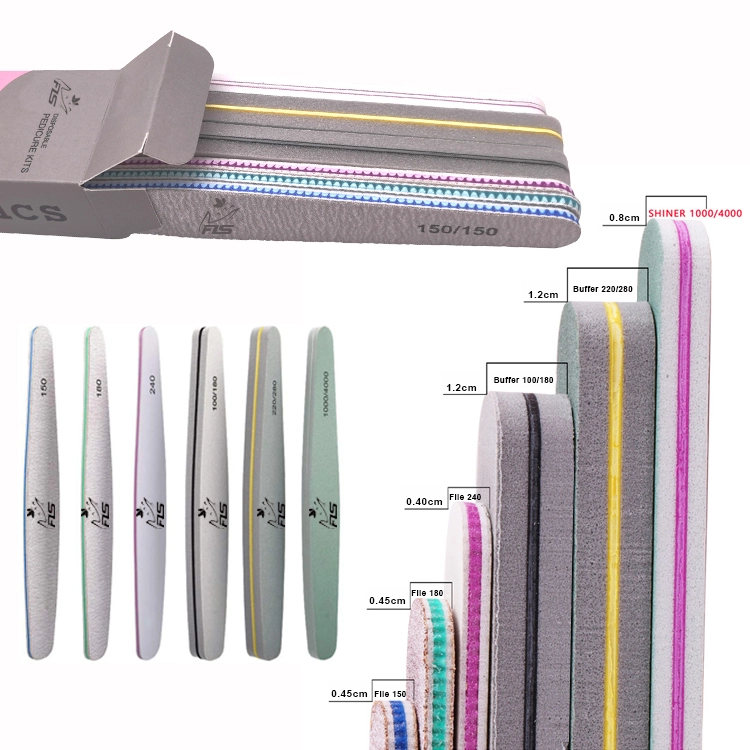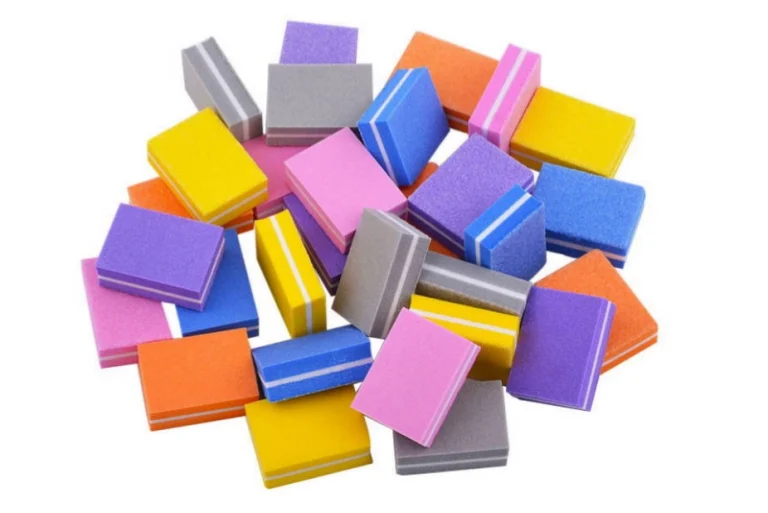Introduction — Why Nail File Replacement Actually Matters
Filing your nails is one of those tiny habits that feels routine — grab your emery board, smooth the edges, done. Most of us don’t even think twice about it. We’ll replace our toothbrush, toss expired skincare, but that old nail file? It just keeps sitting in the drawer.

Here’s the thing: an emery board isn’t meant to last forever. It collects oils, dust, and — if you’re unlucky — bacteria. After weeks of use, it starts acting more like sandpaper that’s been left out in the rain. You might not notice at first, but your nails will. Small splits, rough edges, and unexpected peeling often trace back to one quiet culprit — a worn-out file.
So let’s get real about it:
How long does an emery board actually last?
What are the red flags that it’s time to ditch it?
And what options are out there that last longer (and look a bit more pro)?
What Exactly Is an Emery Board Nail File?
Think of an emery board as a simple, double-sided sandpaper tool glued onto cardboard or thin wood. One side feels rough, the other smoother — like a tiny toolkit for shaping and polishing nails. Most people use it for natural nails, though it works fine on acrylics too.
The catch? The grit wears out quickly. Once the top layer dulls or softens, the file just slides over your nails without doing much. Worse, it traps everything — oils, tiny nail dust, maybe even a drop of lotion you had on. Over time, that turns it into a pretty unhygienic little strip.
A nail tech once joked to me: “If you wouldn’t reuse the same makeup sponge for months, why do it with your nail file?” She’s got a point.
How Long Does an Emery Board Usually Last?
It really depends on how you use it. There’s no universal “three-month rule” that fits everyone. A salon worker filing twenty sets of nails a day will go through them faster than someone who only shapes on Sundays.
Still, a good rough guide looks like this:
| Usage Frequency | Recommended Replacement Time |
|---|---|
| Daily Use | Every 2–3 months |
| Weekly Use | Every 5–6 months |
| Salon Use (Shared Tools) | One-time or single client |
If you notice the grit feels smoother, or if it starts to bend like wet paper, that’s your sign. Honestly, some boards lose bite after just ten or fifteen uses. That’s totally normal.
Also, where you store it matters. Keep it in a damp bathroom drawer, and it’ll warp faster than you’d expect. Moisture softens the glue and dulls the surface. Once that happens, even the best brand won’t save it.
When to Throw Your Emery Board Away
You can usually feel when it’s time. The texture starts acting more like fabric than sandpaper. Filing becomes a chore instead of quick and crisp. Sometimes the edges peel, sometimes the board develops an odd smell — that’s bacteria, by the way.
Another clue? The results. A good file leaves nails smooth. A tired one leaves splinters or tiny jagged edges that catch on your clothes. If that happens, it’s not your nails’ fault.
And here’s a mistake many make: soaking it in water or spraying alcohol to “clean” it. That rarely helps. The cardboard base absorbs liquid, the glue weakens, and the grit loses bite. You end up with a floppy, useless file.
When in doubt, just toss it. It costs less than a cup of coffee — your nails deserve better.

Can You Clean and Reuse an Emery Board?
Short answer? Not really. Emery boards are like paper towels — they’re meant to be replaced, not washed. Once you add moisture, bacteria love it even more.
Here’s what happens when people try:
- Water warps the board and lifts the top layer.
- Alcohol wipes make it look cleaner but ruin the grit.
- Scrubbing just spreads dirt around.
If you’re using one at home, keep it personal. Don’t let others borrow it. In salons, professionals treat them as one-client tools — use once, then toss. It’s not wasteful; it’s hygiene.
Many suppliers stress this same point.
As Felice puts it:
“We protect customer privacy, focus on product quality, and provide good after-sales service.”
That kind of mindset — caring about hygiene as much as style — should apply to your nail tools too.
What Happens When You Keep Using an Old File
The risks aren’t dramatic, but they add up. A worn-out file can make nails peel or split in layers, especially at the edges. That uneven surface is basically an open door for bacteria. If you’ve ever noticed a red, sore patch near your cuticle after filing — that might be why.
Salon techs know this well. Using the same dull board across clients risks cross-contamination. Even at home, you could pick up a mild infection without realizing it. Healthy nails depend on clean tools — just like healthy teeth depend on a clean toothbrush.
Better Alternatives to Emery Boards
If you’re ready to upgrade your routine, there are plenty of options — each with pros and cons.
| Type | Durability | Hygiene | Best For |
|---|---|---|---|
| Glass Nail File | Very long-lasting | Can be wiped with alcohol | Natural nails |
| Metal File | High | Washable, ideal for tough nails | Thick or acrylic nails |
| Sponge Buffer | Medium | Gentle, soft finish | Shaping and polishing |
| Plastic Core File | Good | Washable, reusable | Frequent filers |
A glass nail file is a favorite among pros because it’s washable and lasts almost forever. It costs more upfront but saves waste long term.
For example, Felice offers high-elastic sponge buffers and zebra-grey nail files — cute shapes, customizable logos, and solid grip. I’ve seen them in salons where tools get heavy daily use, and they hold up far longer than cardboard boards.
A quick comparison — glass vs emery board: glass wins in durability and cleanliness, but emery still rules for travel or quick touch-ups.

Conclusion — Keep Your Nails (and Tools) Fresh
Replacing your emery board isn’t vanity. It’s hygiene. Using a dull file is like using a blunt razor — technically possible, but why risk it?
Here’s a simple checklist:
- Swap out old files every few months (or sooner if they look worn).
- Don’t share. Even with family.
- Keep them dry — no bathroom humidity.
- Try a washable or glass file if you’re filing often.
“Choose Felice, means you choose a professional and reliable partner.”
That quote sums it up. Pick quality, stay consistent, and treat your nail tools with the same respect you give your skincare.
FAQ
Q: How often should you replace your emery board nail file?
A: If you file your nails every day, change it every 2–3 months. For occasional users, every 5–6 months works fine. Salon techs usually replace emery boards after each client to prevent cross-contamination.
Q: Can you clean an emery board with alcohol or water?
A: Not really. Emery boards are made of cardboard and glue — both break down when wet. Alcohol also ruins the grit. It’s better to replace it rather than risk bacteria buildup.
Q: What’s better — glass or emery board nail file?
A: For hygiene and durability, a glass nail file is better. It’s washable, smooths nails more gently, and lasts years. But emery boards are still great for travel kits or quick at-home fixes.






